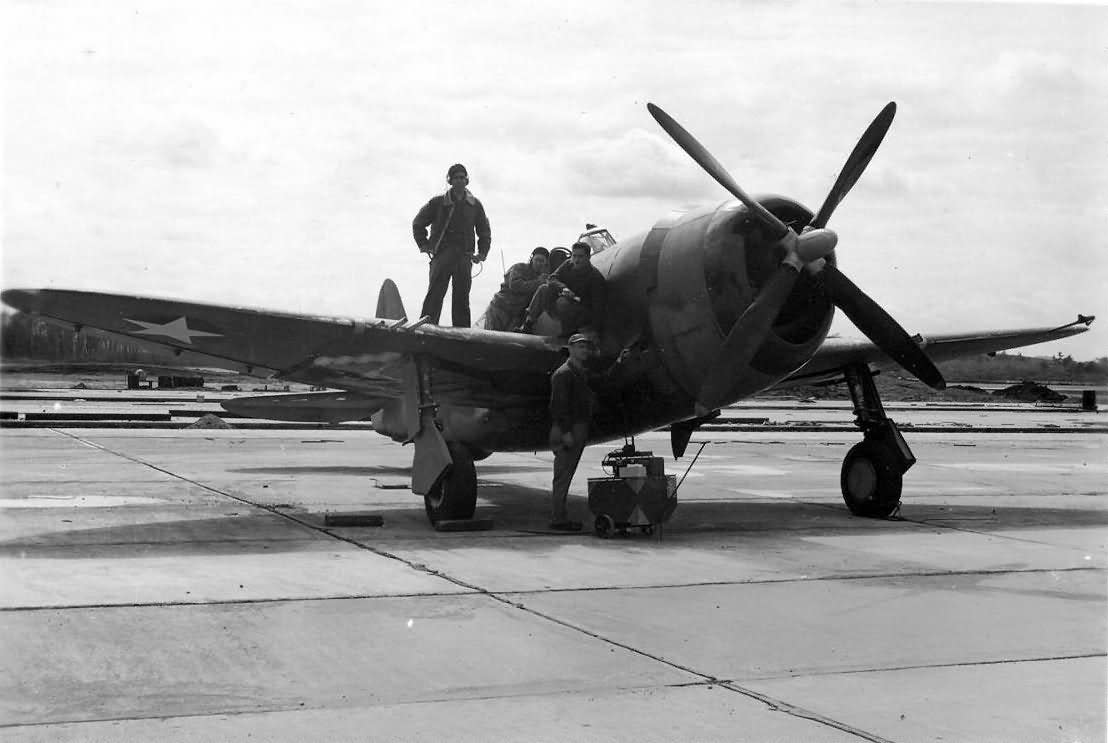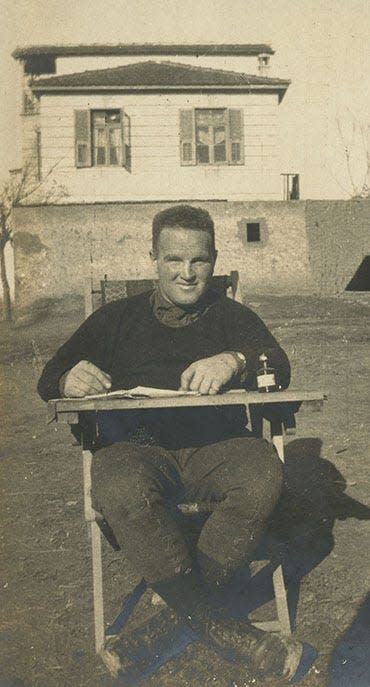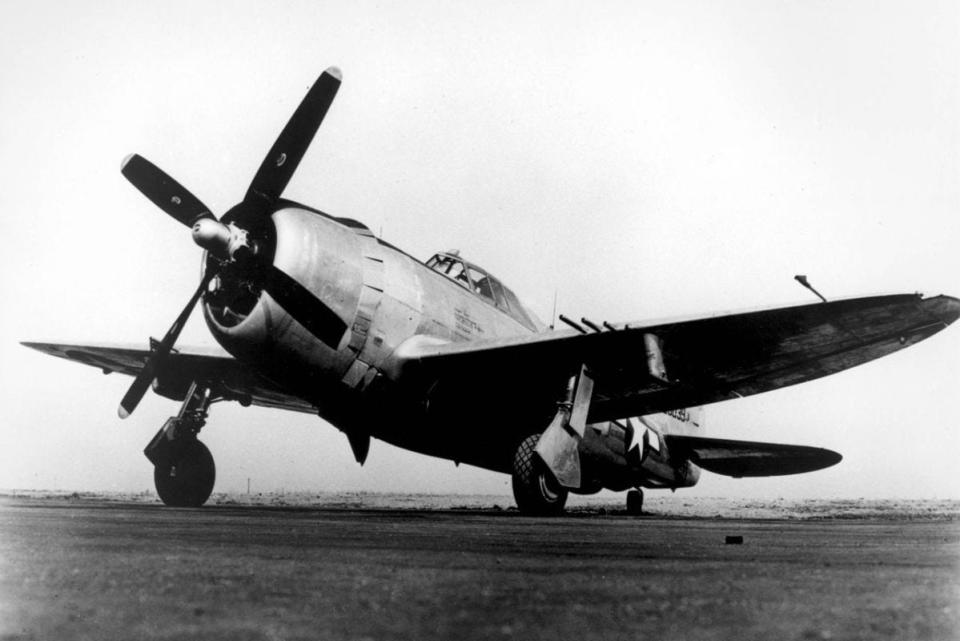Remembering Bluethenthal Army Air Base: When the skies were filled with patrols, training

To this day, whenever I see or hear a propeller-driven aircraft overhead, instinctively I envision a World War II Wilmington P-47 Thunderbolt, as if nothing changed.
My nostalgia at work.
From Dec. 8, 1941 on, the Army Air Forces commandeered our civilian airport, expanding its Castle Hayne site encroaching on the city limits. Civilian operations relocated down Carolina Beach Road.
Bombers and fighters from renamed Bluethenthal Army Air Base, a.k.a. Bluethenthal Field, filled area skies on anti-submarine warfare patrols, air intercept, and pilot and crew training for deployment.
The original name honored Wilmington aviator Arthur Bluethenthal of the French Lafayette Flying Corps, our first World War I death.
Government censorship wrapped the base’s development more than for Camp Davis and the shipyard. By October 1942, land, housing, and support facilities included three new 7,000-foot runways.
The StarNews, on Oct. 2, 1942, wrote: “When the war is over and the Army has left, the airmen will have given New Hanover County one of the best fields in this section of the nation.”
So they did.
Base operations
Perimeter security deterred intruders from gaping at teeming military aircraft and limited public access. Until the August 1945 open house, twice I accompanied my mother on her Red Cross nurse’s aide dispensary duties. The jug-nosed P-47s awed me, whether coming, going, or sitting still.

Assigned aircraft evolved with base missions. P-38 and P-40 fighters arrived first for coastal patrolling. B-17, B-24, and B-26 bombers replaced them for ASW duties. Support squadrons like Camp Davis target-towers also quartered there.
P-47 training commenced as the German U-boat threat abated by mid-1943. These roaring, heavy-throated single-engine fighter-bombers painted the sky olive drab and silver. Then came crashes and deaths.
Lt. Eugene Johnson told Rotarians of his “rugged” experiences with the Flying Tigers in China when Japanese outnumbered them 15 to one.
Capt. Roland Wooten, considered one of America’s most distinguished fighter pilots after 130 missions, sold war bonds in 1944. Four Bluethethal pilots received the Distinguished Flying Cross, including Capt. John Winkler, Wooten’s wingman, who already earned 14 Air Medal Oak Leaf Clusters. Lt. Anthony Evans had 12 AM OLCs in P-38s. Lt. Duane Marshall earned seven in B-24s.
The StarNews’ military-life columns featured Bluethenthal’s “Over Wilmington, With Air Base Boys,” that announced its “attempt to present the life of the soldier, his problems, and news events which might be of interest to townspeople.”
The crashes
At least 21 military aircraft crashed and 14 pilots died around our area, mostly in 1944. We learned through newspapers, street talk, and witnessing. None crashed near my Forest Hills neighborhood.
Common threads. Primarily Bluethenthal P-47s. White pilots, 20-21 years old, new lieutenants, single, northerners. Training flights, engine trouble, pilot error, midair collisions.
A number occurred among population, including into Maffitt Village, the Love Grove Black community, and Winter Park; several in Brunswick County; three with fatalities near Camp Davis. On Aug. 1, two deadly crashes happened some 50 miles apart.
Sept. 29 was air-ground catastrophe central. Both pilots died instantly when Bluethenthal P-47s collided during a squall, damaging property near Carolina Beach.
The dispatched base fire engine hit a bus downtown, sending six Black passengers to Community Hospital. An ambulance headed there smashed into a car nearby.
The dead: Capt. Leo Bernatti, a 10-month North Africa veteran, held the DFC, Air Medal with 10 OLCs, and Presidential Unit Citation. The other pilot, a trainee.
Public reaction
Clerk Muriel Williamson remembered, “When a plane crashed on post we would jump in a vehicle and go running after it” to check personal effects. “We knew when a unit was going off to war. We knew we’d never see them again. It was sort of sad.”
Bill Kingoff reached a P-47 crash site between the runway’s south end and Princess Place right after the crash. “You could hear the drone of the planes all day long.”
Emerson Willard, on Navy leave, watched aircraft operating around Masonboro Island. One crashed. After phoning Bluethenthal, he rowed over. A crewman died.
Helen Swart’s family lived in the airport flight pattern. The Army maneuvered in their fields. She recalled “so many airplanes like migrating birds. They rattled the dishes in houses. Frightening.”
Two crashes lay dormant for years.

In February 1944, authorities believed Lt. Arthur Sepanen’s P-47 disappeared in fog into the Brunswick swamp or ocean near Southport. In March 2000, a resident found WWII P-47 wreckage on Ocean Isle Beach. Sepanen’s machine, perhaps? It bore indications.
In January 2004, while clearing ILM runway obstructions near Smith Creek, authorities identified P-47 remnants covered by wetlands muck. Its pilot. Lt. Lew Newsom survived this April 1945 crash.
Wilmington
Airmen concocted unorthodox methods courting ladies. A B-24 crew returning from ASW patrols dropped note papers and a contact telephone number. That’s how Estelle Owens met and married crewman Robert Edwards.
Fighters buzzed neighborhoods and dipped wings showing off over girlfriends’ houses. They dated “all those cute Bluethenthal boys,” recalled Virginia Harris. The Army court-martialed at least one pilot for acrobatic flying.
May 1945. Germany defeated. In 1941 officials obliterated the Murchison Building roof’s large painted “Wilmington” airmen’s marker, showing latitude, longitude, and an arrow pointing to Bluethenthal. Repainted, it signaled one could fly a private plane safely into town.
Okay, then one could also wear a bathing suit on the beach after dark with car headlights turned on high.
By November, 130 personnel manned idle Bluethenthal. In 1946 the federal government, after spending $4.7 million, transferred the surplus 548 acres free to the Wilmington–New Hanover County Airport Authority, including facilities for the National Guard. Also restored: the 1941-evicted Pennington Flying Service.
Fortunately, Wilmington’s aviation-life planning leaped ahead, uncharacteristic of other unproductive attempts to convert the wartime boomtown into postwar progress.
Wilmington native, military historian, and retired Navy captain Wilbur Jones grew up here during World War II. His 19th book, “The Day I Lost President Ford: Memoir of a Born-and-Bred Carolina Tar Heel,” is available on wilburjones.com.
This article originally appeared on Wilmington StarNews: Bluethenthal Army Air Base during World War II in New Hanover

